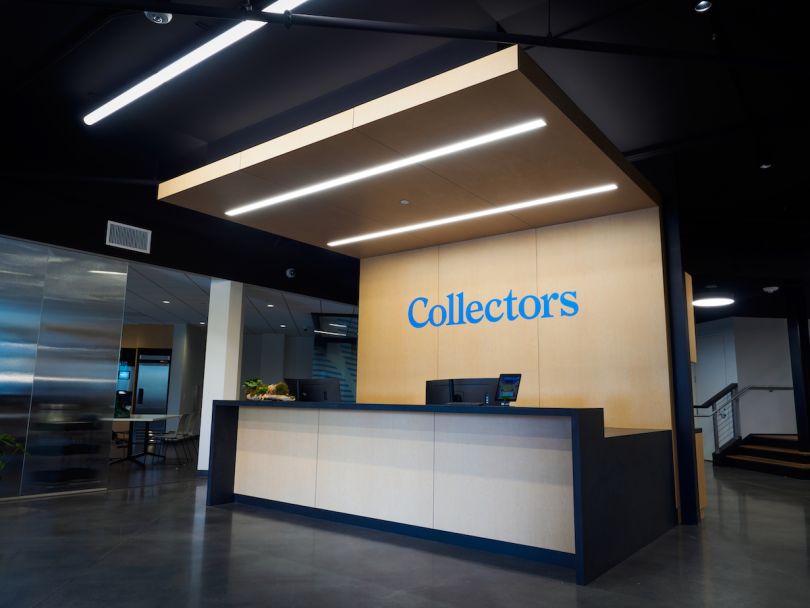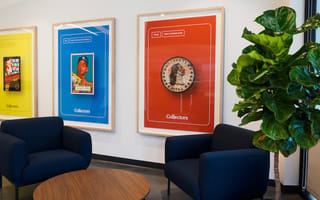Picture this: you’re digging through cardboard boxes of tokens from your childhood. You find a tattered binder filled with the Pokemon cards you once traded with your friends.
Though you were trying to “catch ‘em all,” it wasn’t quantity over quality. You treasured what you traded for. That means these long-forgotten cards are in pristine condition and might be worth something.
After a quick Google search, you discover that the Shadowless Charizard card could be worth more than $400,000. You explore reselling your collection and see that a professional football player actually retired from the NFL to auction Pokemon cards as a full-time gig. And he’s made millions.
That’s right — former NFL linebacker Blake Martinez watched as influencers and other celebrities resold playing and trading cards at the start of the pandemic. Though his robust Pokemon card collection had long ago been given away by his mother, he purchased vintage packs and started to auction cards on Instagram for as little as $5 but as much as $672,000.
Like Martinez does, you might send your Pokemon cards to a company like Collectors — a platform that provides third-party authentication and grading services for collectibles like trading cards, coins, video games, event tickets, autographs and memorabilia — before selling the card or preserving it as a memory for generations to come.
Since its founding in 1986, Collectors had been a grading company, determining collectibles’ authenticity and ranking their condition. In 2021, the business acquired Goldin Auctions, an important step on the path to Collectors’ ultimate vision: becoming a one-stop-shop platform. Smit Gujarathi, senior director of engineering at Collectors, set out to build a platform where customers could store their collectibles, have them graded, sell them or buy other items with four other engineers in 2021.
“We were a small team, and I wanted to make sure we focused as much time and effort on the product features that enhance the customer experience,” Gujarathi said. “We decided to initially use the serverless frameworks to reduce the management overhead and keep in mind the billing costs.”
Since the launch, Gujarathi’s team has released new features like Balance, which allows customers to buy items using the proceeds from a sale. The Vault integration allows sellers to transition items to their new owners without shipping them, which means international customers can buy and sell with ease.
Built in sat down with Gujarathi to find out more about the product development process behind the Goldin platform.
What obstacles did you encounter along the way, and how did you successfully overcome them?
We built this team during the height of the pandemic, and we met in person for the first time after a year of working together. At the start, when there were so many unknowns regarding architecture, the MVP and each other’s working styles, we ran into problems. I firmly believe if the vision is clear and we are headed in the right direction, engineers are self-motivated and take ownership to improve a situation. By over communicating, building a strong partnership with the product team and giving early feedback on the product requirements and system design documents, we resolved the issues and eliminated future back-and-forth. We also built a culture where it’s okay to make mistakes and learn from them.
When we built the Goldin platform, we had to build the platform and an admin portal to support our internal teams, like accounting, auction management, photography, shipping and customer support. We quickly realized engineers had to do a lot of manual work to support internal requests, so we invested heavily in building the admin portal at the start to free up time to build customer-facing features. The product team was a great partner in understanding the burden on engineers, and they invested time and resources in the admin portal.

What teams did you collaborate with in order to get this across the finish line?
We create quarterly roadmaps across our main verticals and review them with stakeholders from business, product and tech teams. This helps us manage and call out dependencies on other teams. Once we move from the planning stage to execution, we have weekly updates and create Slack channels to improve transparency across teams. Technical project managers help us coordinate, sequence and communicate about the product execution.
The launch of our grading, vaulting and platform solution is the perfect example of teamwork. From the vault team to the collection management and marketplace teams, everyone knew their role and the sequence of work. Individual teams understood the mission and helped each other to reach our shared goal. We delivered the project on time with minimal issues post-rollout, and this has been a big milestone.
“There are so many interesting problems to solve here. We ship a ton of features at a regular cadence, which results in a lot of learning and leading opportunities for individual team members.”
When you think of other companies in your industry, how does Collectors compare when it comes to how you build and launch new products?
We are a growing company that has the ambition and resources to invest in innovative new offerings for our customers, and everything we work on has gone through strict prioritization. We have product-market fit, and we are a profitable company. Our focus can actually be on how we can leverage best practices and modern tech to build the best experience for our customers.
From an engineering perspective, there are so many interesting problems to solve here. We ship a ton of features at a regular cadence, which results in a lot of learning and leading opportunities for individual team members. If an engineer has the hunger and passion to drive a change, we make sure that irrespective of titles, you get a chance to work on or lead projects so you can grow and learn quickly in your career.
In our development process, Datadog and PagerDuty monitor and alert us about production issues so we can act on them in a timely manner. We have a CI/CD setup with multiple environments for developers and quality assurance, which speeds up our software development process. We also use feature flags to do dark releases, and that’s connected to an A/B testing platform, which helps us learn more about customer behavior and implement the best experience for them that’s driven by data.







